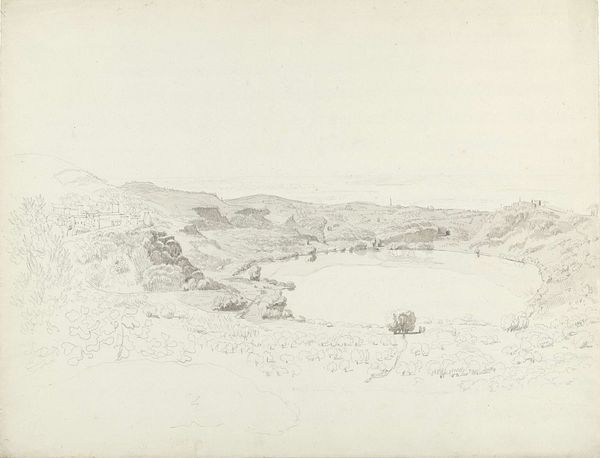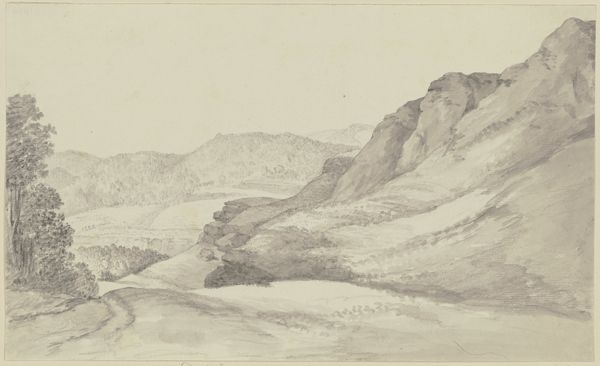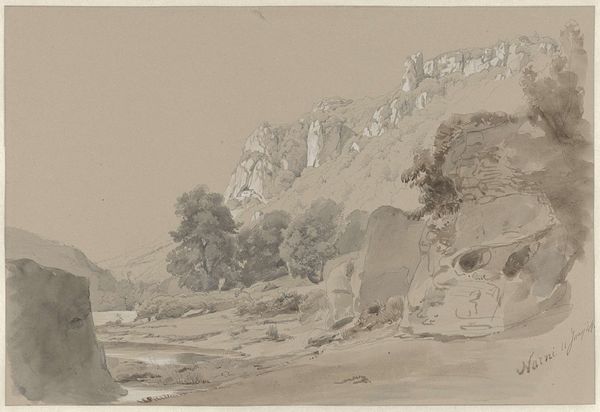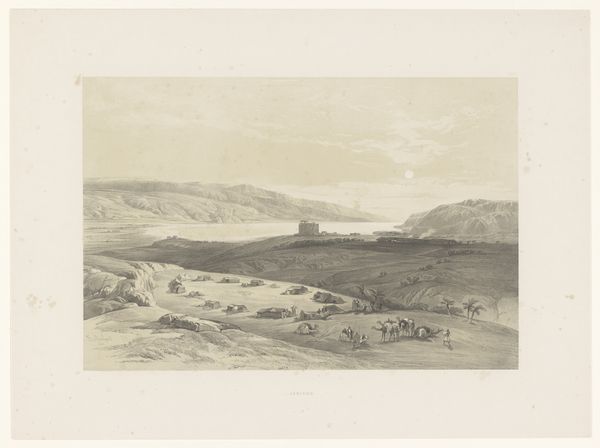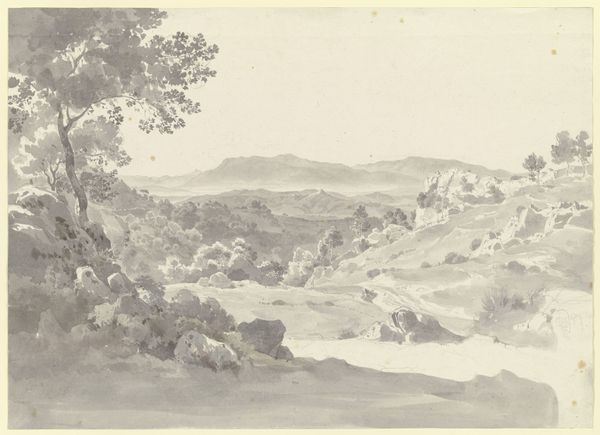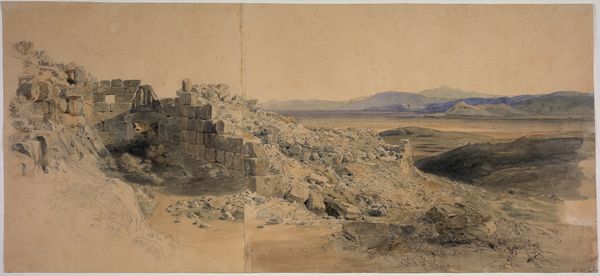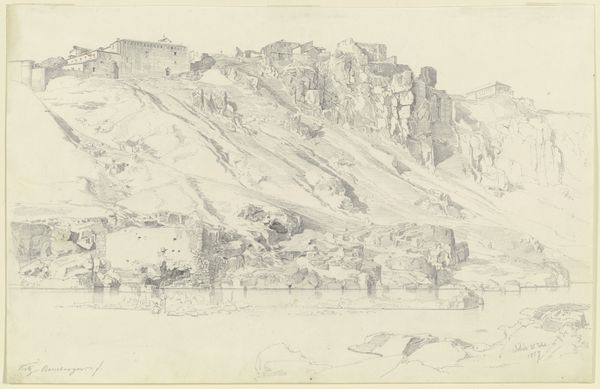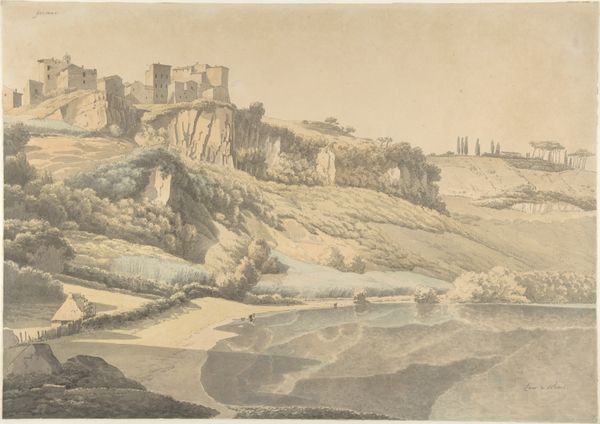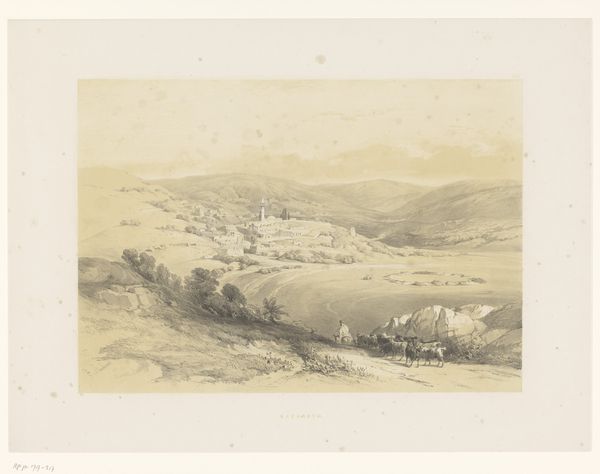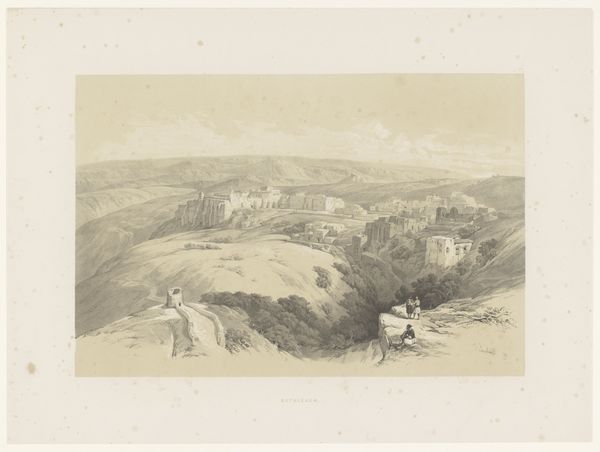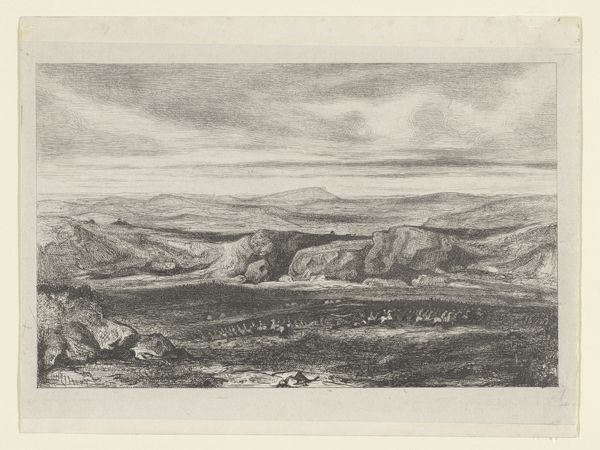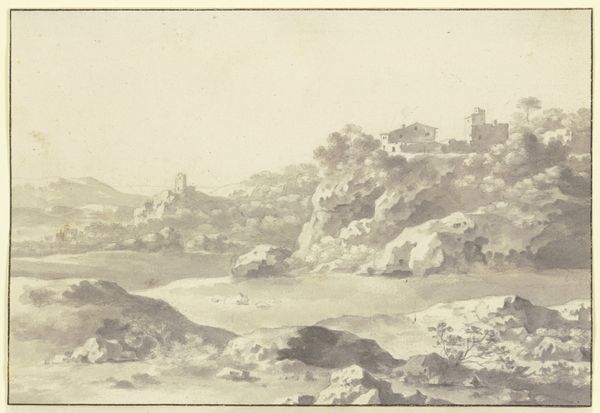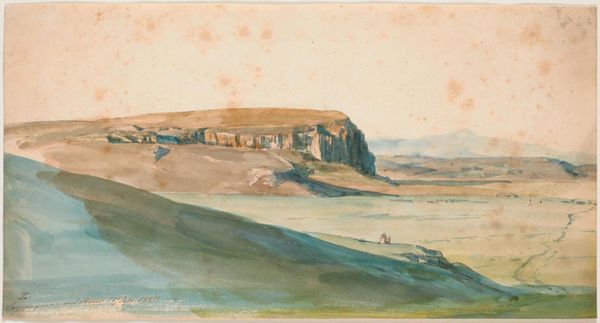
drawing, plein-air, watercolor, pencil
#
drawing
#
plein-air
#
landscape
#
watercolor
#
pencil drawing
#
romanticism
#
pencil
Dimensions: height 351 mm, width 502 mm
Copyright: Rijks Museum: Open Domain
Curator: Looking at this tranquil scene, one is immediately struck by the delicacy of line and muted tones. It evokes a sense of serenity, almost as if time stands still. Editor: Indeed. This watercolor and pencil drawing, "Gezicht op Civita Castellana," thought to be created between 1844 and 1846 by Pierre Louis Dubourcq, captures exactly that sentiment. Dubourcq, a figure deeply involved with artistic circles, traveled extensively, and works like this offer insight into the romanticized vision of Italy held by Northern European artists during that era. Curator: Romanticism, you say? I can see that. The way the light gently caresses the architectural forms, especially that rounded structure on the right... It speaks to the beauty in decay and the sublime power of nature. Technically, the artist is using a limited palette of mostly greys and creams. Editor: A calculated restraint. The light tones speak to the rising popularity of plein-air drawing. It allowed artists like Dubourcq to quickly capture landscapes, of course. But also provided a readily transportable artifact for middle class tourists visiting European landmarks on "The Grand Tour". The aqueduct below seems both a testament to human engineering and something fragile at the edge of dissolution. Curator: The composition definitely emphasizes this contrast—the delicate rendering of foliage against the sturdier masses of stone and architecture, that contrast lends dynamism and structure to what would otherwise be a mere pretty vista. Do you see how the artist balances these rather grandiose subjects using pencil hatches? There are areas of extreme finesse contrasting to what I think are rapid marks and lines. It brings out those interesting architectural forms you describe. Editor: Absolutely. There is something powerful here. I look at how this beautiful scene serves a particular social function in its time. It tells us much about how we engage with images today. Curator: Agreed, it shows art as more than an aesthetic achievement—rather an intricate tapestry woven with cultural threads. Editor: Precisely. The formal elements underscore those contexts!
Comments
No comments
Be the first to comment and join the conversation on the ultimate creative platform.
